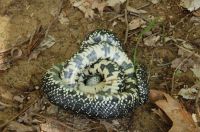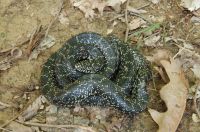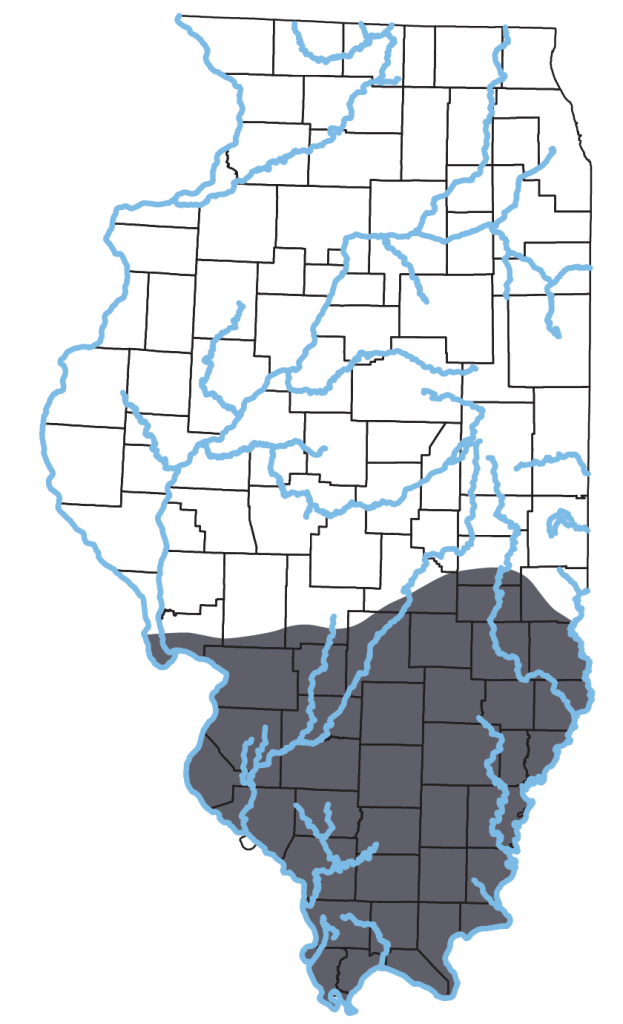Lampropeltis getula (Linnaeus, 1766)


Key Characters: Some or all back and side scales black with a small light dot in the center; belly checkered black and yellow; back scales smooth; anal plate not divided.
Similar Species: North American Racer, Gray Ratsnake, Plain-bellied Watersnake. See the Key to Snakes of Illinois for help with identification.
Subspecies: Two subspecies are recognized in Illinois, the Speckled Kingsnake, L. g. holbrooki Stejneger, 1902 and the Black Kingsnake, L. g. niger (Yarrow, 1882) southern third of Illinois.
Description: Large (up to 125 cm TL) glossy black snake with white dot in the center of each scale. In the subspecies niger, the small light dots form 40 – 50 narrow cross-bands with intervening scales lacking dots. In the subspecies holbrooki, the dots do not form any recognizable pattern
Habitat: Wooded hills.
Natural History: Mates in spring and lays 8-12 eggs in June in rotting logs or tree stumps. Young hatch in August or early September at 20-30 cm TL. Like many snakes, it is largely nocturnal during summer and more active during the day in spring and autumn. Slow and deliberate in its movements, this is a constricting predator of other reptiles, especially snakes (even venomous ones), lizards and their eggs, birds, and small mammals. Main predators of juveniles are other snakes; main predators of adults are hawks, raccoons, skunks, and opossums.

Status: Locally common in the Shawnee Hills and along the southern Mississippi River bluffs.
Etymology: Lampropeltis – lampros (Greek) meaning bright, brilliant, radiant; pelta (Latin) meaning small shield; getulus – unknown, possible error in locality data; holbrooki, patronym for John Edward Holbrook; niger – (Latin) black.
Original Description: L. getula: Linnaeus, 1766, Syst. Nat., 12th ed., Vol. 1, p. 382; L. g. holbrooki, Stejneger, 1902, Proc. US Natl. Mus. 25 [1902]: 152; L. g. niger, Yarrow, 1882, Proc. US Natl. Mus. 5: 438.
Type Specimen: Not designated for L. g. holbrooki; USNM 12149, collected by Robert Ridgway for L. g. niger.
Type Locality: Not designated.
Original Name: L. getula: Coluber getulus; L. g. holbrooki, same as current; L. g. niger, Ophibolus getulus niger.
Nomenclatural History: Pyron and Burbtink, 2009, Molecular Ecology, 18:3443-3457 elevated several subspecies of L. getula (including niger and holbrooki) to full species using mtDNA but without adequate sampling. Harrington and Burbrink, 2022, showed that a phylogeny using full genome sequencing did not support the mtDNA results.

